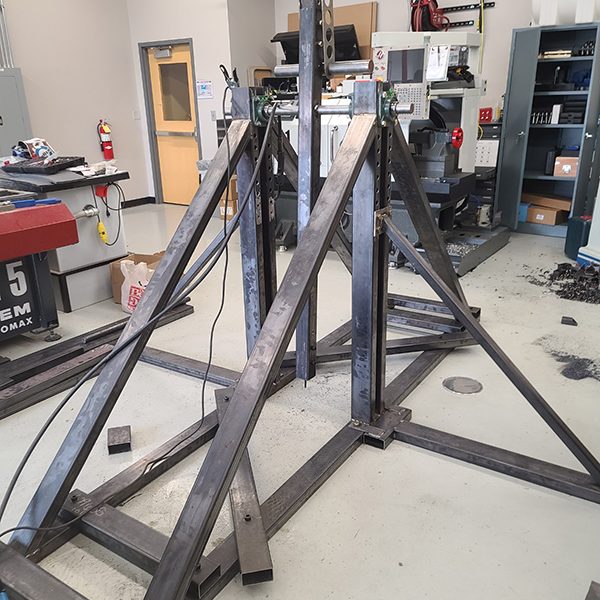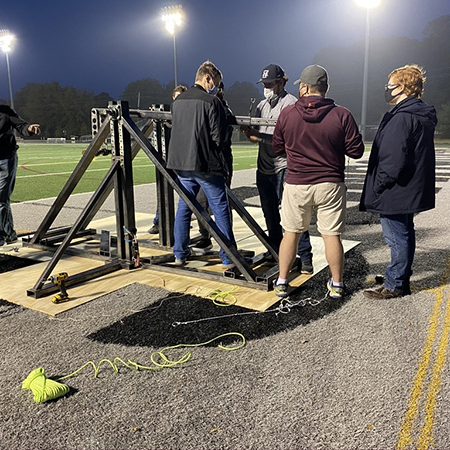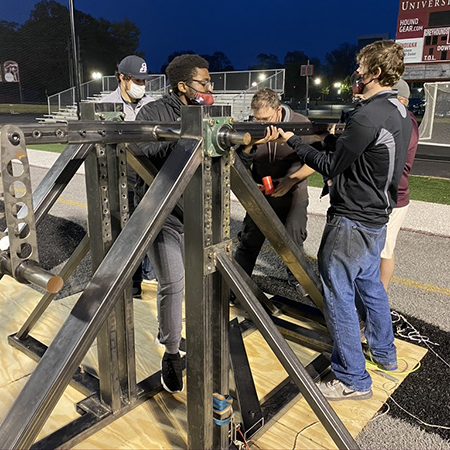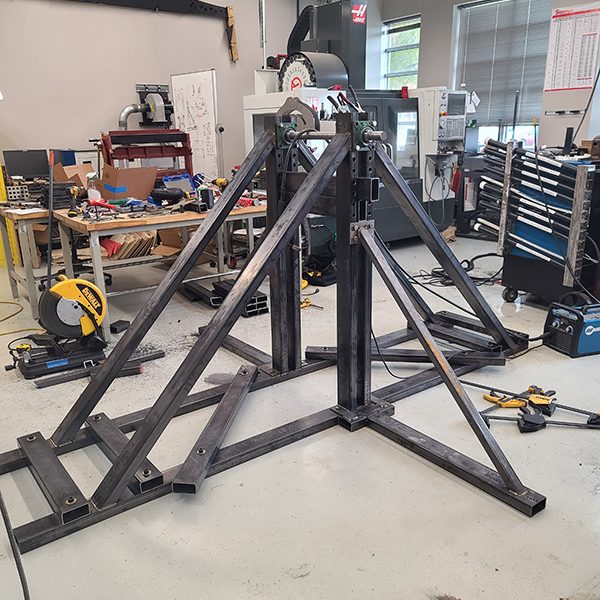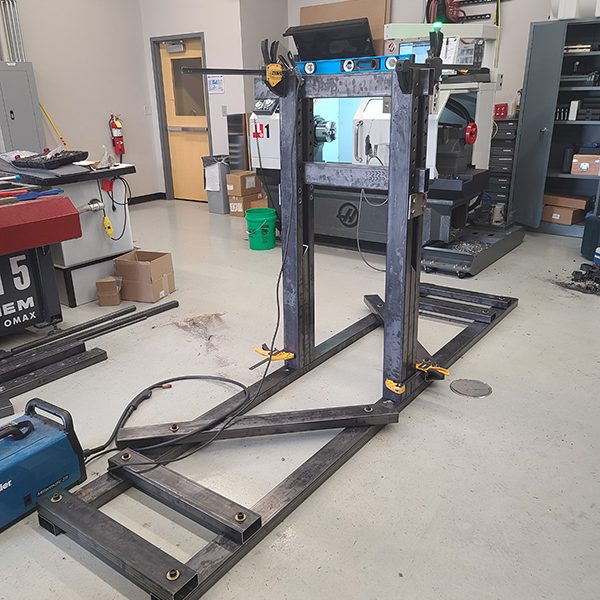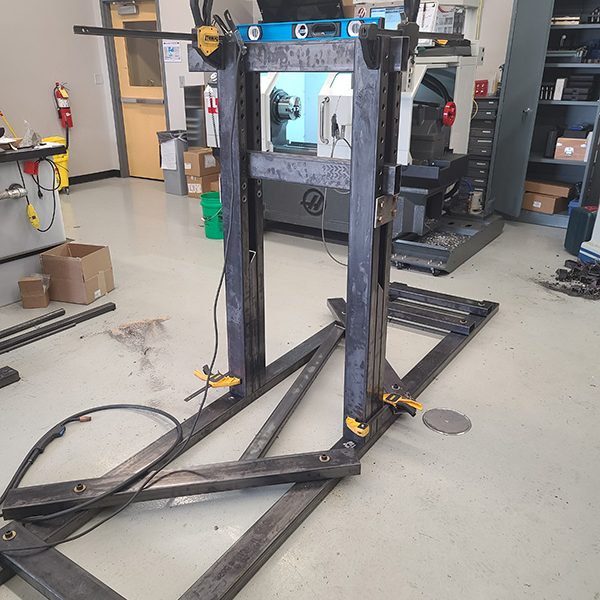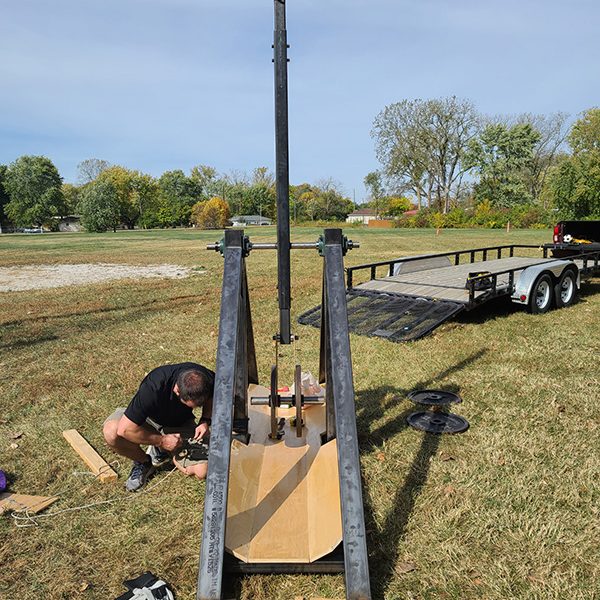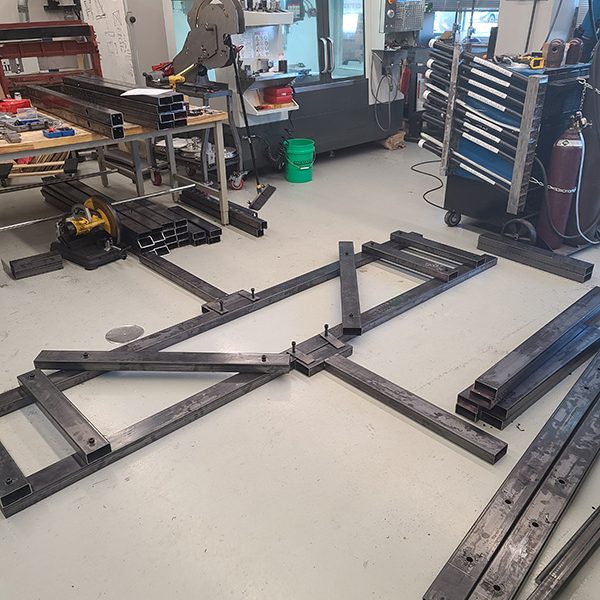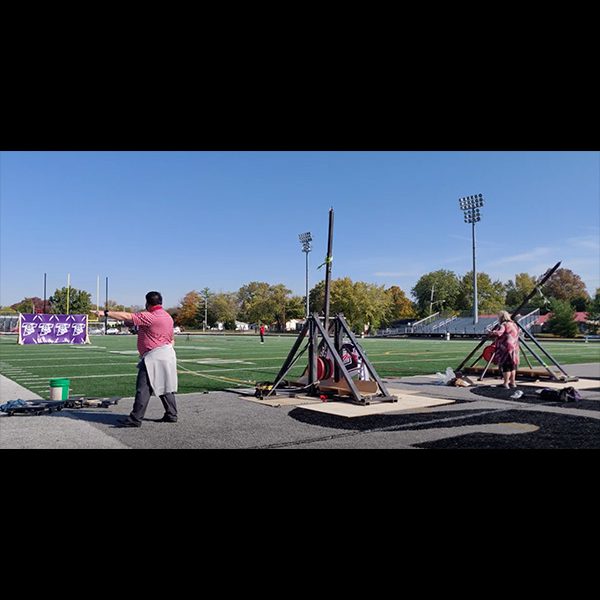R.B. Annis School of Engineering rises to Top Dog Challenge with custom-built trebuchets
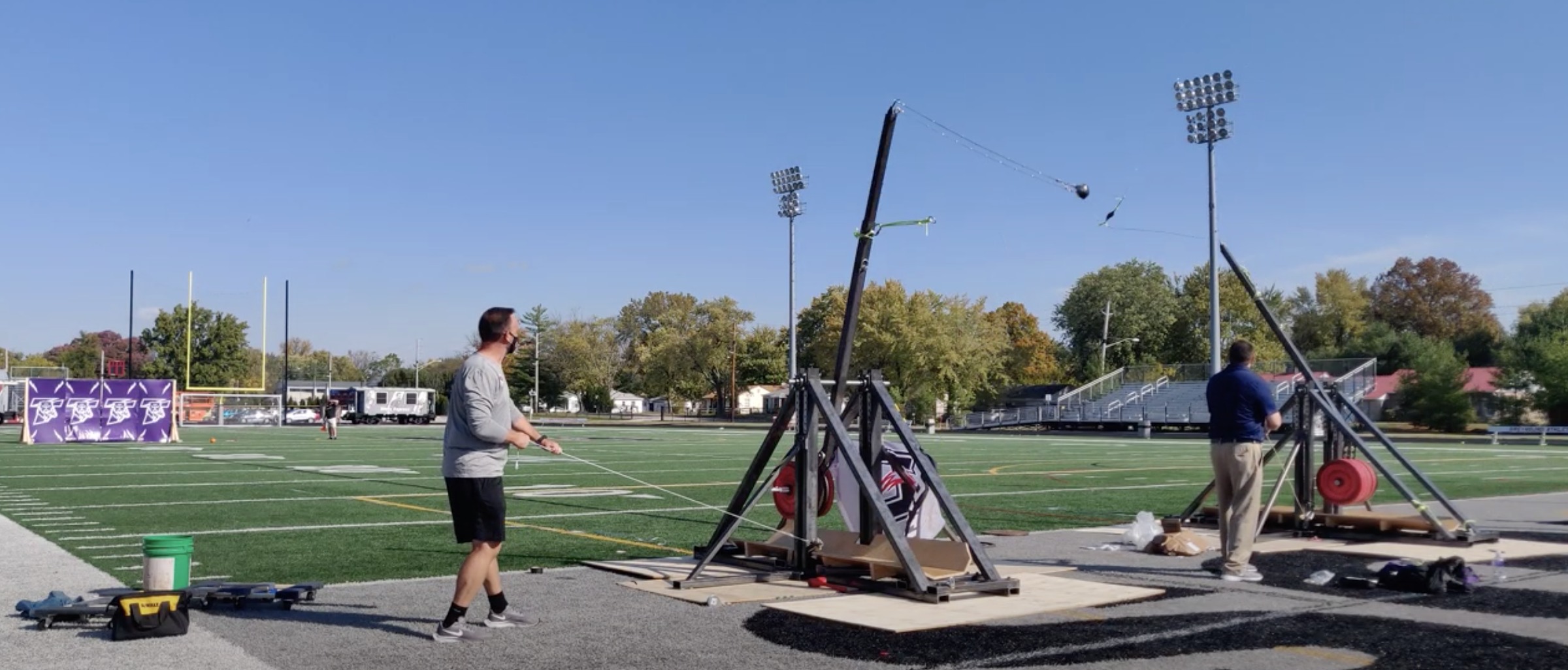
Marking the start of a new University of Indianapolis tradition, Homecoming 2020 brought together the ingenuity of the R.B. Annis School of Engineering (RBASOE) with the University’s philanthropic mission.
Part of the Top Dog Challenge, a competition with Truman State University to see which institution could raise the most funds in support of local non-profit groups during Homecoming 2020, RBASOE built trebuchets for Catapult for a Cause and launched baseballs and pumpkins across the football field at Key Stadium for a fun-filled day.
“This was a great opportunity to apply engineering to make something fun,” said Paul Talaga, associate professor of engineering.
The project presented a real-world opportunity for students and faculty to collaborate and problem-solve during a tight time frame. James Emery, who manages mechanical systems and labs, said the team had about three weeks to design and build two steel trebuchets—an astonishing feat.
“The biggest challenges were time, access to weights and access to a location to test. The other big issue is the weight of the trebuchets alone. They weigh roughly 600 pounds each,” Emery explained.
Talaga coordinated the project and liaised with numerous university departments in the process. Faculty and students overcame several obstacles as the deadline loomed.
“We had a lot of challenges with the release angle. Without consistent access to a testing field and the effort involved with moving the trebuchets, we did not have enough time to test and fine-tune the configuration,” Talaga explained. “The student practice evening was rained out and the students didn’t have much time to experiment with the trebuchets before the competition.”
Through trial and error, the team found settings that worked well for baseballs.
“Luckily the same settings worked for the pumpkins!” Talaga said.
For students like Jared Hilt ’21 (mechanical engineering and physics major, mathematics minor), it was a chance to work on a one-of-a-kind project while putting his skills into action. He calibrated settings on the release angle, arm length, sling length and weight. He also reloaded the trebuchet and made sure it was safe to be around before firing.
“Being able to work on the project was fantastic. It provides valuable experience working with others and optimizing designs,” Hilt said.
Chijioke Ezeani ’22 (software engineering major, mathematics minor) appreciated the chance to work with engineers from different fields of expertise.
“I worked on pre-testing and assembling the trebuchet. My teammates and I were also responsible for changing the counterweight and length of the sling in order to optimize trebuchet launch and projectile,” Ezeani said.
Sam Schoonveld ’22 (mechanical engineering major, mathematics minor) assisted with transportation, set-up and testing of the trebuchet.
“I thoroughly enjoyed the chance to work on this project, and I think that being able to have hands-on experience in fabricating a complex system like a catapult can help translate the various courses we have to take as engineers. My teamwork skills improved due to having to work with multiple classmates and faculty throughout the project.”
Steve Spicklemire, director of engineering instruction and associate professor of physics, noted how the trebuchet project aligned with the R.B. Annis School of Engineering’s DesignSpine curriculum, which allows students to develop technical and professional skills along with an entrepreneurial perspective.
“Learning how to produce a working prototype on very short notice is exciting!” he said. “This was a great project for engineering students and faculty working together to build something that actually works very quickly.”
“It was also gratifying to know that there was a dimension of charity with this project that provided a great mission and purpose for all this effort beyond the joy of engineering and competition for its own sake,” Spicklemire added.
Engineering faculty say the trebuchets will be useful in many future engineering courses as experiments and optimization.
“These types of projects are great examples of real-world projects. Trebuchet dynamics have been well-studied but matching the simulator’s results to real-experimentation is important,” Talaga said.
The Top Dog Challenge raised more than $8,000 for Indianapolis Animal Care Services, Gleaners Food Bank of Indiana and the Make-A-Wish Foundation.

